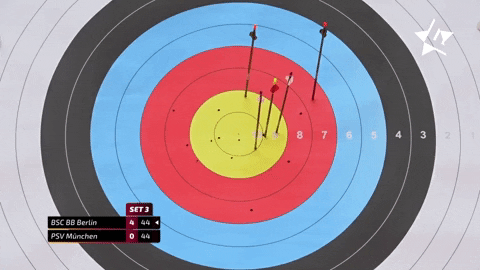If you’re like me, you recognize the value of adding experienced members to your team, especially when conditions are tough.
That’s why I am thrilled to have the legendary educator Mike Parks, RagingBull’s Senior Training Specialist, by my side during this latest market downturn.
Mike is a veteran trader and educator, AND his addition to my upcoming video sessions is going to add a level of insight that can only come from decades of experience in trading and market education.
Mike is incredibly knowledgeable on all things markets, and his talent for teaching new traders how to use market signals to choose the right options strategies is unmatched.
Even with this week’s market turbulence, Mike has found a long call option idea that is setting up very nicely.
Let’s take a look at the details of this trade and cover everything there is to know about buying call options.
During periods of turbulent market action similar to what we witnessed this past week, traders that want to be executing bullish trades must find stocks that are showing leadership over the market, and that’s what Mike has done.
We can determine this by using what is the simplest form of quantitative analysis, which is relative strength ratio analysis.
No, this is not the relative strength indicator (RSI) that you and I have come to love as a momentum indicator.
Instead, it is ratio analysis that simply measures one security vs. another by creating a ratio.
Below is a chart showing Mike’s latest long-call idea.
In the bottom panel of this chart is the ratio that measures Exelon Corporation (EXC) divided by the benchmark S&P 500 ETF (SPY).
By doing this, we know that when the ratio rises the security in the numerator position (EXC) is stronger than (outperforming) the security in the denominator position (SPY).
Conversely, we know that when the ratio falls the security in the numerator position (EXC) is weaker than (underperforming) the security in the denominator position (SPY).
And right now, my friends, it’s clear as day that EXC has been leading the market for several months.
On a 4 hour chart, the stock is close to being in a squeeze setup.
Here’s the trade:
Mike is looking for the stock to show strength by confirming a breakout above the $57 level.
If this occurs, he will look to purchase the 18 Feb 22 55 strike call option.
The target one is $59.51 and target two is $61.43 on this trade.
Understanding buying call options
First and foremost, a trader would choose to buy a call option because he or she believes shares of the underlying stock are going to rise to a certain price point in a certain period of time.
This price and time relationship is key because a straight purchase of call options, or put options for that matter, leaves the trader vulnerable to the passage of time, otherwise known as time decay (Theta). We’ll touch more on this in a moment.
Traders favor buying call options as opposed to the underlying stock because it provides them with leverage. In other words, options enable you to control the same amount of stock with a lot less money.
Here’s an example:
First, the key to remember is that when you purchase a call option you have the right (not the obligation) to buy 100 shares of stock.
So, if you buy 1 XYZ $10 (the strike price) call option and pay a premium of $1, you’ve only paid $100 (1 call option = 100 shares x the $1 premium you paid = $100) to control $1000 worth of stock.
On the other hand, if you would have just purchased 100 shares of the underlying stock, you would have paid $1000 (100 shares x $10 = $1000).
Again, this leverage aspect is a huge benefit to buying call options.
Like buying the underlying stock, the potential for profit is, in theory, unlimited.
The other advantage is that you are only risking $100 as opposed to $1000.
For instance, in the example above, the options trader would only lose $100 as opposed to $1000 if the stock were to fall to zero.
What is the main drawback of purchasing call options?
The main drawback is the effect that time has on long call options.
Specifically, Theta decay.
For instance, if a trader just buys the underlying stock, he or she can theoretically hold that stock forever and not be concerned about the effect that the passage of time would have on the value of the stock.
When buying straight call options, however, the trader will see the value of that option decrease over time if shares of the underlying do not rise.
In addition, even if the shares of the underlying were to rise over time, they would have to rise far enough and fast enough to overcome the fact that time decay decreases the value of those options at an increasingly rapid rate the closer things get to expiration.
Here’s what I mean:
Theta
An option’s price is made up of intrinsic value and time (extrinsic) value. The closer an option gets to its expiration date, the faster that extrinsic value erodes. That rate of decay is the option’s Theta. It represents the amount of time value that will be lost in the next day.
The closer the option gets to expiration, the bigger Theta gets. And, this increase happens at an exponential rate. Here’s an example of how Theta might erode an option’s time value.
And, here’s what that would look like when plotted on a graph.
Now, whenever you buy an option (call or put), your position has a negative Theta. On the other hand, when you sell premium (call or put) you have a positive Theta. For an option buyer, Theta works against you, and for the option seller, Theta works in your favor.
What are the basic mechanics of buying a call option?
Remember, when you buy a call option, you are NOT obligated to buy the underlying stock. Instead, you have the right to buy shares of the underlying stock at a certain strike price (i.e., the strike of the specific option you purchase).
The trader (or market maker) on the other side of the trade is the one that sold that contract to you to establish the trade. Therefore, they are the ones who are obligated to sell the stock to you, IF you decide to purchase shares of the underlying stock from them at some point.
It is worth noting that the very large majority of options contracts either expire worthlessly or are closed out prior to expiration, which means that the buyer of the call options never actually purchased shares of the underlying from the contract seller.
Options have an expiration date and do not last forever.
If the value of the option you purchased increases prior to expiration, you can choose to “sell to close” that option for a profit without purchasing the underlying shares.
Remember, it is rare for options traders to actually purchase calls with the objective of buying the underlying stock.
But, if this is your plan, in order to be able to purchase the underlying shares the price of the underlying shares must be above the strike price of the option you “bought to open” at expiration or else the options expire worthlessly.
Traditional options contracts typically expire on the third Friday of each month.
Conclusion
To be a successful options trader, you must know the ins and outs of the strategy you choose to employ.
As I’ve detailed for you in this article, traders that purchase call options must have an aggressively bullish opinion of the underlying stock, in order for those calls to fight the effects of time decay.
That’s why Mike has decided to wait for a breakout in this case, because breakouts help to confirm a stock’s strength, thereby improving the odds that your calls will increase in value.
Comments are closed.





5 Comments
Thank you for simplifying this. Makes it a lot easier to understand.
Good idea !!
I want to learn more about this! Can you share that with me?
Hey Mike,
Thanks for the reply! For this, please give us a call at 410-775-8565. We look forward to speaking with you!
Good Trading,
The RagingBull Team
Hello, Thanks 👍.
Blockchain wallet